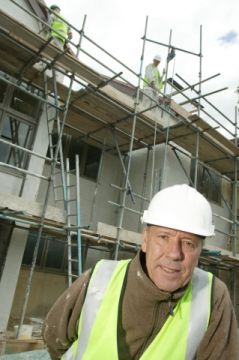
Page 1 of 6 |
When I first started formulating ideas about the Earthdome project, I realised that if it was to have any chance of becoming financially and aesthetically successful, it had to be appealing within the general property market, and that meant looking similar to any other house that you might see in the neighbourhood.
So, unusual architectural tricks or obviously visible ecologically-oriented add-ons that might in any way dissuade the casual house buyer from wanting to see the property went straight out of the window. This project was going to require a fiendishly cunning blend of sustainability and stealth in order to be successful.
With this outline in mind, I set about thinking: how am I to build a normal-looking house using concealed sustainable practices and still end up with a building that yielded extraordinarily low running costs?
The answers to these conundrums turned out to be deceptively simple: to create a thermal mass energy-efficient building that used the earth beneath the building as its energy source as well as using building materials that are readily available off-the-shelf, if you know where to look.
Before I begin with the actual construction process, I'd like to take a minute or two to explain the rationale behind my thinking with this project. You see, I think that the building industry has generally got itself into a bit of a rut. House manufacturers are focussing entirely on maximum profits for minimum effort, and neglecting some areas that could make a huge difference to the quality of life for the occupants of their buildings, and also to the environment on a local and global scale.
Global warming is now a widely accepted phenomenon and studies conducted in recent years suggest an alarming trend towards an exponential increase in the rate of change within the global environment. The modern trend for lightweight housing structures such as timber or steel frame constructions may appear ideal at first glance, but in the longer term, will these structures stand the test of time, and of variations in our climate?
Page 1 of 6 |


